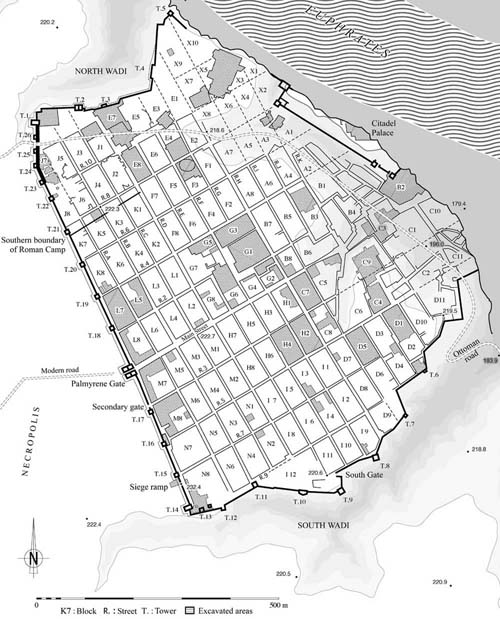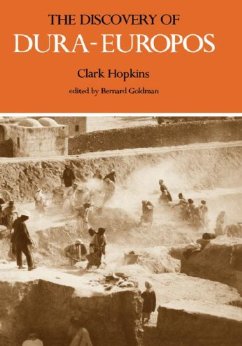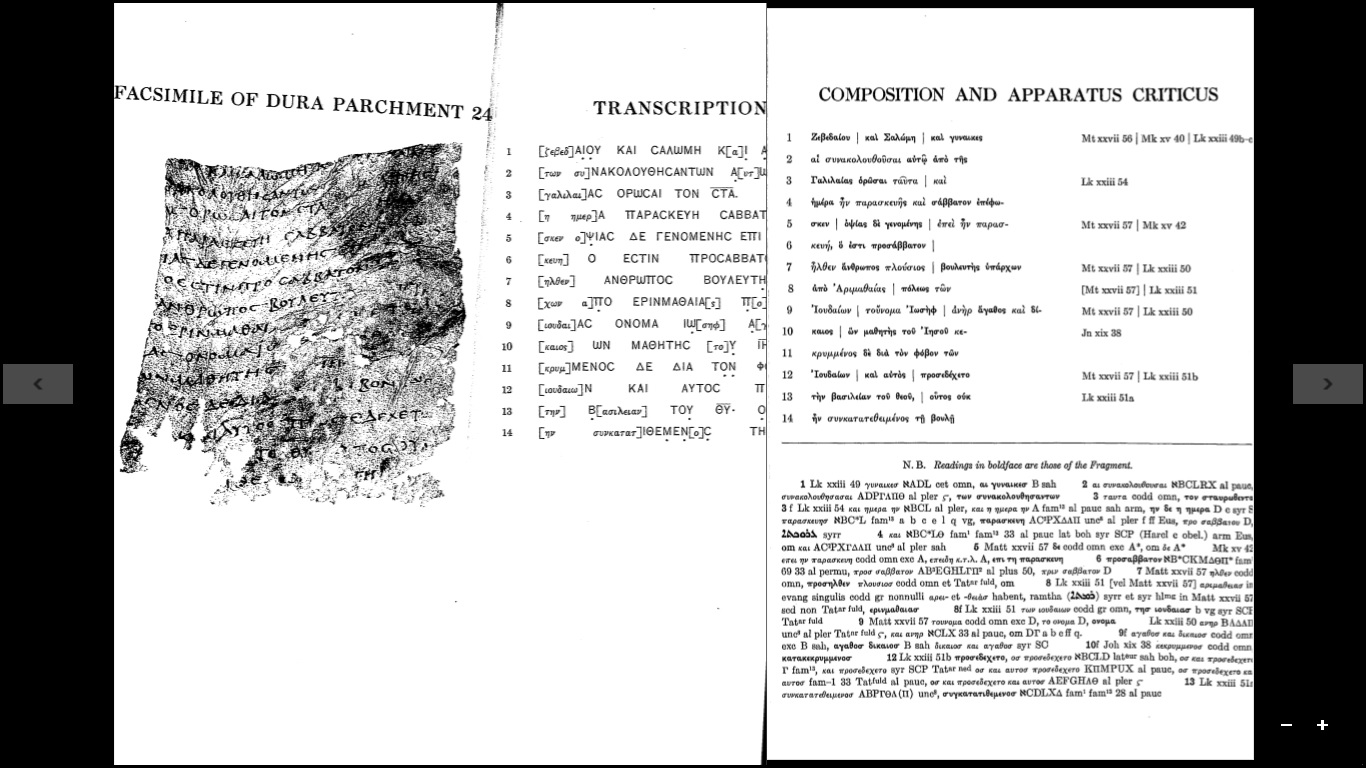
 |
Freethought & Rationalism ArchiveThe archives are read only. |
|
|||||||
|
|
Thread Tools | Search this Thread |
|
|
#11 | ||
|
Contributor
Join Date: Jun 2000
Location: Los Angeles area
Posts: 40,549
|
Quote:
|
||
|
|
|
|
#12 | ||||||
|
Contributor
Join Date: Mar 2006
Location: Falls Creek, Oz.
Posts: 11,192
|
Quote:
The claim that this is some Christian amulet has never been made AFAIK. I can think of at least two reasons why not: (1) Christian related "Magical Papyri" appear in the 4th century. (2) The person who wrote Dura Fragment 24 was not a professional scribe (AFAIK the "Amulet" stuff was prepared by professionals) For an into to some really weird Christian Magical papyri see Roger's page more-on-jesus-in-the-greek-magical-papyri The second point implies that whoever wrote the fragment was a layman. It is certainly not a professional job. This fact is noted above. That the fragment was crumpled up maybe neither here not there. The terminus ad quem of Dura Fragment 24 via the "in situ" argument. The usual argument that appears for this fragment is that it was buried during the construction of a rampart to shore up the western wall of the city by the Roman defenders of Dura in a last ditch effort to prevent its collapse. I cannot find at the moment any more detail concerning the discovery of the fragment except that which I have posted above in the diagram. The following appears from GREEK FRAGMENT OF TATIAN'S DIATESSARON.pdf linked to above: Quote:
Quote:
Quote:
The terminus ad quem of Dura Fragment 24 via the "in situ" argument relies upon the fragment being buried in the mass of the rampart while the rampart was being constructed, and I would like to find a more detailed archaeological report to confirm this fact.  This is from Simon Jame's site, and the caption is: Above, the undermined defences at Tower 19 (background), where many of the finest military artefacts were preserved. OTOH the terminus ad quem of Dura Fragment 24 via the "in situ" argument would fail if any of these scenarios were the case: (1) The fragment was found elsewhere (eg: rubbish dump). (2) The fragment was deposited within a few centuries of c.260 CE at the edges or within the top of the earthen rampart (for example between the walls and the top of the rampart), in a location which, 1500 years later looked to be part of the earthen rampart. Has anyone read The-Discovery-Dura-Europos (or via: amazon.co.uk) by Clark-Hopkins and, if so, does it provide any further details. Alternatively, what archaeological report for the excavation deals with the discovery of the fragment, who wrote it, and is it available online or via subscription? Thanks for any info. |
||||||
|
|
|
|
#13 |
|
Contributor
Join Date: Mar 2002
Location: nowhere
Posts: 15,747
|
The Discovery of Dura-Europos,
Clark Hopkins, Yale University Press 1979 [t2][106] ...in one of the baskets of finds from the embankment, behind (west of) Block L8 and not far from Tower 18, a piece of parchment scarcely three square appeared. Susan [Hopkins], compiling the catalogue, entered it on the daily register and made the usual attempt to decipher and identify what she could. The little piece, not badly crumpled, was written in clear, legible hand, as far as the complete letters were concerned. .. [107] It was one of those chance finds, a fragment of parchment two blocks away and on the other side of the Great Gate from the Christian building. How it got into the debris at that point remains a mystery, and how it happened to be preserved and then discovered is another. Since it was impossible to sift the great mass of the embankment, we depended on the sharp eyes of workmen. A small piece of parchment, dirt brown, appearing in the shovel dirt and dust required good fortune as well as sharp eyes. The find was made on March 5, 1933, and there was an enthusiastic but unsuccessful searching in the Bible to find the appropriate passage. We found readings close and tantalizing. Clearly we had some sort of gospel text, something indubitably connected with the Christian community. Susan made the transcription, as we took photographs and sent parchment and copies on to Yale, still not recognizing its extraordinary significance.[/t2] 
|
|
|
|
|
#14 | |
|
Contributor
Join Date: Mar 2006
Location: Falls Creek, Oz.
Posts: 11,192
|
Thanks spin. This corresponds to the earlier location diagram.
 However the description that it was found "in one of the baskets of finds from the embankment" does not necessarily (although it could) imply that is was at the bottom of or in the middle of the embankment. Hence my comment ""conspiracy of time and a ball of paper". If the fragment was at (or near) the surface layer of the embankment it may have fallen from the upper layers of the embankment during the excavation of the embankment. The point is that the condition of "in situ" is not an absolute condition because it necessarily implies a three dimensional excavation which has a surface layer and edges (including between the inside of the outer wall and the rampart). It would be interesting to know whether the embankment covered the roof/rooves of Block 8, because if it did not there would be further edges between the walls of Block 8 and the earthen rampart.  I assume this picture shows an example of the "bucket bearers" c.1935? It also shows a step-wise method in the excavation of the rampart whereby material of the surface layer, may fall away into the deeper parts of the rampart during the excavation. "How it got into the debris at that point remains a mystery ....." My position is that the probability of this terminus ad quem chronology cannot naturally therefore be 100% (as it may be for other items in other digs where there is a far more controlled environment). I do not see this to be an unreasonable position, but others may disagree. Anyway, thanks for the further data. Simon James site on Dura states: Quote:
(1) via the Roman army, and (2) via Christian hermits. I don't see these alternatives to be out of the question. |
|
|
|
|
|
#15 |
|
Veteran Member
Join Date: Jun 2010
Location: seattle, wa
Posts: 9,337
|
I love the enthusiasm mm displays when greeted with evidence that demolishes his theory. "Time to put on my 'making shit up' hat on!" I think mm developed the fourth century conspiracy theory to suit the inventive side to his personality not the other way around. I think I figured him out. He pretends to believe Constantine made up Christianity in order to invent implausible explanation for this implausible thesis. There we go. Book closed on Pete Brown. Next mashuganah, please ...
|
|
|
|
|
#16 | |
|
Contributor
Join Date: Mar 2006
Location: Falls Creek, Oz.
Posts: 11,192
|
Quote:
The argument being made for a 100% secure terminus ad quem for the Dura Fragment 24 is not completely realistic. The archaeologists did not go out and brush the debris away with fine brushes. The picture on the front of the book shows a similar situation to Oxyryhchus: a mass of lowly paid workers did the job bucket by bucket. Even if bricks were lined on top of the rampart (one source suggests this may have been the case) there is always the possibility that the parchment fragment may have been deposited there (between the bricks on top, or between the houses and the rampart, or between the wall and the rampart, or secreted in some gap in the complex volume defined by the earthen rampart, etc) a century or more later. I certainly understand that if a C14 test dates this to the mid 3rd century, then I will have to develop a variation of my hypotheses in accordance. I also understand that many people here appear to operate on the principle that we can be satisfied with a 100% secure 'in situ' date in this instance. I just don't agree with this for the reasons stated. I think it may be closer to 50%. |
|
|
|
|
|
#17 | ||
|
Veteran Member
Join Date: Jun 2010
Location: seattle, wa
Posts: 9,337
|
Quote:
Quote:
|
||
|
|
|
|
#18 | |
|
Contributor
Join Date: Mar 2006
Location: Falls Creek, Oz.
Posts: 11,192
|
For the sake of the discussion let's assume that the archaeologically derived terminus ad quem is secure and that the fragment is a genuine relic of the mid 3rd century. The author of the fragment is not a professional scribe so we are not looking at the professional preservation of any "holy writ" rather some kind of personal copy or composition.
An image of the fragment is above, and on the WIKI page we find Kraeling's reconstruction. This does not show how the reconstruction was arrived at. The following image (using square backets to indicate missing material, and conjectural emendations) is presented for discussion (sourced from the pdf of CARL H. KRAELING, PH.D. [1935] above)  Let's start with the 3rd line containing a translation of "the crucified one": Quote:
Would this be correct? |
|
|
|
|
|
#19 |
|
Veteran Member
Join Date: Nov 2011
Location: USA
Posts: 4,095
|
This whole picture sounds so strange in a number of areas.
First of all, the so-called non-existent harmony of the four canonical gospels itself doesn't make any sense. A harmony over and about WHAT? IF the four gospels were believed all to be divinely inspired and even contradictory stories, what is there to reconcile?! On the other hand, if there are blatant theological or doctrinal contradictions, harmonizing a story doesn't solve this problem at all. But of course such a "harmony" in the 2nd century is expected to reinforce the belief that the canonical gospels existed PRIOR to the harmony.And of course if it was written in the second century it is a mystery as to why it should only be the basis of commentary in the FOURTH century by one Ephrem, or even some Arabic version in the 11th century. Of course we already know how many writings never actually came into existence until the fourth century. Secondly, what does a scrap fragment found in a dump prove? The article itself indicates that dating the alleged destruction of the obscure town of Dura Europos is based on the dating of COINS. And then to go ahead and build an entire theory based on all this makes no sense at all. It elicits more questions than it answers. |
|
|
|
|
#20 |
|
Veteran Member
Join Date: Jun 2010
Location: seattle, wa
Posts: 9,337
|
It proves the fourth century conspiracy theory is bullshit
|
|
|
| Thread Tools | Search this Thread |
|